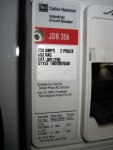Abe Stallcup
Member
- Location
- Pacific Grove, CA
An electrical engineer told me the other day that I should not be specifying 90 degree rated conductors connected to the OCPD because most are UL rated at 75. He said I can use 90 for all other wiring because most bus bars, lugs, etc. are rated for 90. Just not the wiring to the OCPD. True?

